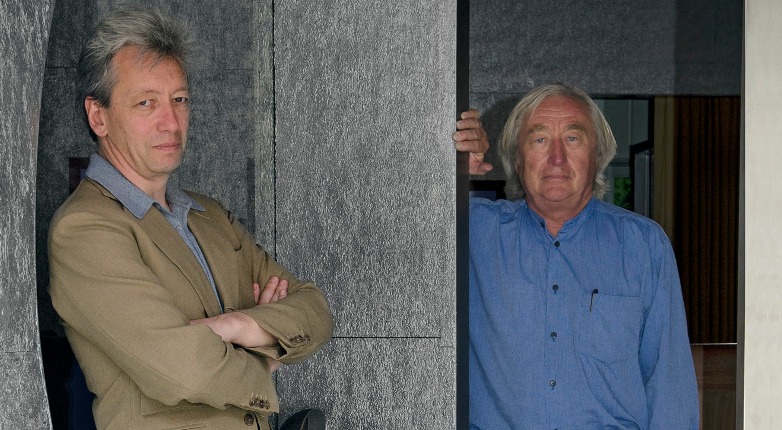When Frédéric Malle hired Steven Holl to design a new shop in Manhattan’s Greenwich Village for his Editions de Parfums brand, he approached the architect the same way he commissions master perfumers for his high-end fragrances. “Do what you want—that’s my brief, more or less,” Malle says. “If I choose the right person for the environment, then I can set them completely free.”
Holl’s local ties—he has lived in New York since 1976—and famed talent for manipulating light made him a prime choice for Malle, whose five freestanding shops (three in Paris, two in New York) all present distinctly different environments. Holl, renowned for high-profile cultural buildings and expansive mixed-use developments, welcomed the change in scale and liked that Malle was a design buff. “I was working on a 3-million-square-foot project in China, and Frédéric came to me with this 400-square-foot shop on Greenwich Avenue,” the architect says. “And I was excited about it because Frédéric knows all about architecture. He went to see the recent Le Corbusier show at MoMA five times.”
The two envisioned the space, which occupies a row house in a landmark-filled area, as an encasement that one might imagine sliding into the site like a drawer. The facade, ceiling, and walls are made of the same material— foamed aluminum, which is manufactured by injecting gas into the metal until it takes on a highly porous, pumicelike structure. “I’ve tested this material for more than 12 years,” Holl says, “and I like how it gets a light patina so that it can be used outside.”
A single large window in the aluminum facade establishes the store’s dominant design motif of a split or broken circle. Guests “break” the shape by opening the front door, which leads to an area with more rounded forms, the curves created by the shop’s wooden furnishings. A large walnut display case on the east wall looks like a circle that has been cut in half and pulled apart from opposite sides. Designed by Holl and built by local cabinetry specialist Javier Gomez, it’s the visual centerpiece of the interior, boasting smooth curves and handsome dado joints that keep its steeply angled shelves in place. The design of this piece arose from a discussion Malle and Holl had about how, when humans smell, the brain’s receptors break down oderant molecules, then reconstruct them for identification and perception. The splitting motif stuck with Holl, who found a simple but rich visualization in the sliced-and-shifted circle, or what the architect calls a “slipped disc.”
Olfaction is of course the raison d’être of the store, but the three smelling stations—where guests can test any of the 21 perfumes offered by Editions de Parfums—are subtle affairs; small, dimly lit nooks cut into the north wall. They are hidden in plain sight, with optical effects that recall the environmental installations of artist James Turrell (although Holl insists this was not his intent). From a distance, they look like flat light panels in walnut frames; only at closer proximity can guests realize they can place their heads inside what are actually spaces behind the wall. A shop employee can fill these chambers with a desired fragrance, then remove the scent with a built-in vacuum when guests are done smelling. The stations provide far more effective tests of scents than the department-store practice of spritzing a piece of paper, which can mask a perfume’s subtle notes and finish, or “dry down,” in perfume parlance.
For Malle, though, the space isn’t just for smelling and purchasing perfumes—in fact, he winces when it’s referred to as a retail environment. He plans to use a different architect or designer for each of his future locations, all of which will provide an escape for shoppers and passersby. “All my shops have one thing in common,” he says. “I want people to get out of their lives when they come to us. They step off the street and come into a quiet space where they have a minute to think about themselves. It’s a very indulgent, sort of selfish moment.”
One does indeed experience a dramatic shift from the preserved brick buildings and diagonal streets of Greenwich Village to the shiny metal panels and walnut arcs of Malle’s shop; the foamed aluminum walls and ceiling can be a bit overwhelming upon entering. But in the late afternoon, when the sun hangs low in the sky, front window shelves sculpt the incoming light into a patchwork of arced shapes on the wooden floor. It’s a stunning sight, echoed by the display case on the wall, and goes to show how natural light can be an invaluable resource in a rapidly developing metropolis. “New York is a great city with terrible buildings,” Holl says. “But because of the Landmarks Commission, these buildings [on Greenwich Avenue] will never be taller. Which means at four o’clock, the sun will come shining through here.”
